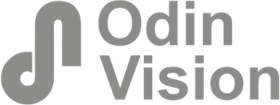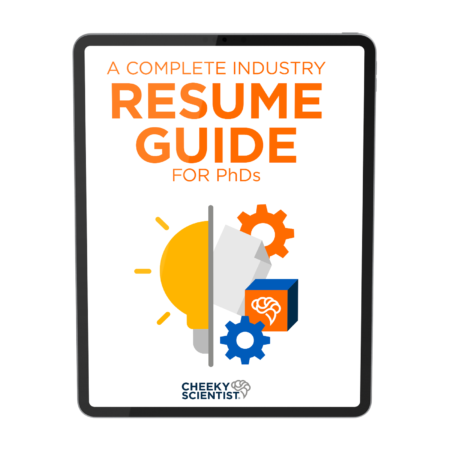8 Life Science Trends In Healthcare, Pharmacology, And Biotechnology

The academic bubble.
It can really shelter you from the real world.
That romantic feeling of doing research for the sake of understanding life’s most complex questions.
There is no bottom line to hit.
No sales figures to reach.
You are doing science because you are passionate about it.
Or at least that’s what you have convinced yourself.
The reality of academia is that labs also need to act like businesses in order to survive.
You need to budget your funds.
You have to publish, or risk not having your grants renewed.
Academics must know which research topics are trending and are more likely to provide exciting results that will gain funding board approval.
The difference is the pace.
You can spend years on a project in academia that proves fruitless.
In industry, there is no tolerance or time for that.
The race to get a new product out is intense.
You never know what other companies may be working on, and therefore you have to put all your resources into making your research successful before someone else does.
If a project is not going anywhere, it is shelved.
Higher stakes, but more exciting.
And exactly what I was looking for.
In order to be a part of this excitement, I knew I had to prove I could speak the same language as industry professionals.
I had to prove that I could add value, not only in my technical skills, but in my ability to understand the goals of the company and what success looked like.
That meant knowing where the industry was heading.
I spent a lot of time learning about the business before even applying for a position.
This paid off when I networked with industry professionals and set up informational interviews.
I was no longer a ‘head-in-the-clouds’ academic.
I was ready to leave academia and enter the business world.
Why Industry Trends Are Critical Knowledge For Job Seekers
Have your eyes set on a research scientist position at a large company?
Or perhaps you see yourself in a more client-facing position like Medical Science Liaison?
No matter what the position, you will require an in-depth understanding of a company’s role within the pharmaceutical, biotechnology, or other health-care industry.
You have to be able to think big picture.
This is very different from academia, where all you worry about is your own project and the small confines of your own lab.
In an innovation-dependent sector such as biopharma, it is essential for organizations and individuals to adapt to current trends to ensure that they continue to thrive in a changing environment.
In a recent survey by the Turnaround Management Society, 30% of company failure was attributed to underestimating changes in the market.
Knowing and forecasting industry trends separates good companies from failed companies. It will also separate a successful job candidate from a failed job candidate.
These trends will help you pinpoint companies to target and serve as crucial information in industry interviews.
This business acumen is a crucial transferable skill that will set you apart from other job candidates.
This is a skill area that PhDs can easily pick up and use to their advantage.
Simply do your research.
Read the news.
Follow companies that interest you on LinkedIn and other forms of social media.
It’s time to put some variety into your reading material.
Put down that research article about your protein of interest and pick up the Wall Street Journal.
Top 8 Life Science Industry Trends For PhDs
PhDs must know the major factors or trends that will be affecting the life science industry, both positively and negatively.
Most professionals involved with this sector are looking forward to the new year with a lot of optimism in the face of previous volatility.
The number of FDA approvals, often considered one of the key determining factors for the health of this industry, decreased to only 22 from above 40.
This is a significant drop.
In the early half of the previous calendar year, biotech and pharma stocks also suffered badly.
But there were also some positive indicators, such as a high number of biotech startups going public (IPOs) and the completion of several successful M&A deals.
Now, as we look forward, let’s see how the new year will shape up and what are the top trends that we can expect to see in the life science industry.

1. The influence of political changes.
Following election years, we can expect changes in rules and regulations which will influence various sectors, including life science.
One such major action already taken was withdrawal from the Trans Pacific Partnership (TPP) and for some experts, this has created a lot of uncertainty among the biopharma organizations who import their products to countries included under this trade agreement.
A major concern also resulting from the TPP withdrawal is the uncertainty regarding the 12-year period of data exclusivity awarded to novel biologics in the US.
It is uncertain whether this will differ compared to countries participating in the TPP.
If, for example, it is lower, it will make them more vulnerable to revenue loss as a result of substitution by cheaper biosimilars.
It is also bound to influence the quantity of US healthcare products imported to the 12 countries in TPP such as China, Australia, and multiple Southeast Asian nations which remain as members.
The second important change was the executive order meant to repeal the Affordable Care Act (ACA).
Healthcare spending, transparency, and health insurance policies were some of the key issues tackled by the ACA.
A Deloitte report indicates that in its first 100 days, it is necessary for the new administration to analyze the situation and implement a replacement for the ACA.
These new plans should be able to iron out the flaws of the ACA and build on its progress, or else there is a possibility of a significant negative effect on the healthcare market, including a large number US citizens losing their health insurance.
Outside of the US, the political change that is predicted to strongly affect the biotech/pharma industry over the next few years is the British Referendum to leave the Europe Union (often termed as “Brexit”).
Much of the research and innovation in the UK are done in collaboration with partners in other EU nations.
There is uncertainty surrounding the maintenance of these international collaborations and regarding EU funding for research projects.
Once Brexit is officially implemented in a few years’ time, funds from the European Investment Fund (EIF) and VC firms located in the EU, to organizations in Britain will be much less readily available.
One report estimates that “Brexit” has put over US$3.5B of funding at risk.
All these policies will significantly influence the life science sector.
The biopharma industry therefore needs to influence positive policy changes to the best of their abilities and adapt to minimize damage.

2. Immuno-oncology and CRISPR.
Highly innovative therapies such as immuno-oncology and CRISPR have experienced significant progress.
We can expect more biotech companies to invest in these fields in the future.
Next-generation gene editing offered by CRISPR has the potential to substantially reduce the cost of gene editing while improving efficiency.
Compared to previously used technology such as TALEN, CRISPR can be 200 times less expensive.
It is also more efficient than RNA interference technology in achieving complete protein loss.
This technology will gain more prominence and we may soon see the initiation of multiple human trials using CRISPR.
Developing targeted gene therapy for sickle cell anemia and overcoming drug resistance in HIV are the two areas in which CRISPR is predicted to make significant breakthroughs.
The other innovative technology, immuno-oncology, is in a much more advanced stage compared to CRISPR, but its full potential is yet to be realized.
There are already successful drugs, such as Keytruda and Opdivo, and multiple ongoing clinical trials.
Startups developed around immuno-oncology technologies will grow in number and will be lucrative investment targets for life science VCs.
Thus far, there have already been about 850 ongoing/open clinical trials for immuno-oncology and industry experts believe this number will exceed 1,000 by year’s end.
3. Pricing of healthcare products.
This can also be attributed to political changes.
Biotech and pharma companies were caught in the cross-hairs of the US presidential election campaign, with regards to price increasing of drugs.
It is expected that the new administration will implement some new laws aimed at putting a check on pricing of healthcare products.
Much to the dislike of several major drug makers, a bill has already been introduced to make it easier to launch biosimilars, which will make it easier to replace existing biologics with cheaper biosimilars.
It is estimated that over the next five years, the introduction of biosimilars has the potential to save about US$110 billion for healthcare systems in the US and EU.
Although drug prices have taken most of the heat for healthcare expenses, in reality the cost of prescription drugs constitutes only 17% of the total healthcare expenditure.
A PwC report on Medical Cost Trend estimates that almost half of the total employer health care cost will come from hospital expenses (30% for inpatients and 19% for outpatients).

New changes in healthcare regulatory laws aimed at implementing new measures, such as commercialization of generics, change in payment schemes for diagnosis/screening, and other new rules mostly aimed at saving costs for the healthcare system, are anticipated.

4. Rise of biosimilars.
Over the past few years, biosimilars have been scoring approvals and gradually gaining in acceptance.
Biosimilars are drugs designed to have active properties similar to one that has been previously licensed.
The growth of biosimilars can be expected to continue, owing to the combination of reducing medication costs and upcoming patent expiration for some major biologics such as Humira, Rituxan, and Avastin.
A report on biosimilars predicts that the global market size will reach $2 billion in two years.
As mentioned earlier, new legislation favouring biosimilars is being proposed around the world to put a check on rising healthcare costs.
Currently, the US only has two approved biosimilars, while about 20 are approved in the EU.
This number is expected to significantly increase over the next few years.
It is estimated that there are 56 biosimilars in the pipeline and about 30 biopharma organizations have active ongoing biosimilars development programs.
The rise of biosimilars will have far-reaching effects.
It will affect healthcare spending and force insurers to adapt and pose additional challenges to the biologics portfolio of large biopharmaceutical companies.
5. Increasing mergers & acquisitions.
This is one trend that has shown a steady rise over the past few years and we can expect it to remain that way.
There will be more M&A deals as pharma organizations look for restructuring and partnerships to reduce costs.
The total worth of completed private M&A deals for the last two years was over US$10B and this number is predicted to go even higher.
Some experts believe that M&A deals for private companies might be around US$15B if the financial climate is favorable.
Besides these, we can also expect multiple acquisitions of large public companies, such as the acquisition of Baxalta by Shire.
We already saw the first big acquisition with Johnson & Johnson acquiring Actelion’s complete portfolio of marketed medications for an estimated value of US$30B.
There will also be more acquisitions of upcoming innovative startups by major biopharmaceutical organizations.
We saw the first example of this when a VC-backed startup Delinia (developing novel autoimmune therapy) was acquired by Celgene for a total value of over US$775 million.
6. Venture capital deals.
Venture Capital (VC) deals will certainly continue to grow as interest in life science startups continues to rise.
In fact, most of the biotech-focused VCs have raised substantial investment capital by year’s end and are ready to invest now.
According to a healthcare investment article published in the Wall Street Journal, investments in this sector have been growing substantially each year.
From US$12.04B to US$16.1B within one year alone and predicted to continue growing.

Among the various subsections of the life science industry, traditional biotech is expected to attract a major portion of the total investment in this sector.
Investments experts estimate that the predicted amount of total investment in US-based new biotech organizations will be over US$7B.
This is much higher than the historic annual average of US$4.5-5B.
This influx of capital is predicted to support about 500 biotech startups in this calendar year.
A great year ahead is predicted for life science VC-backed startups.
A trend that has been ongoing over the last ten years is the concentration of VC-funding in major biopharma clusters.
Boston and San Francisco received over 70% of all VC-funding in the previous two years.
This facilitation of biotech startup growth through VC funding will have another secondary outcome.
Since several of the VCs which invest in biotech/pharma are also investing in IT or consumer electronics, involvement of VCs will result in more collaboration of these two innovation-based sectors, with investment firms acting as the bridge.
With more use of wearables and other devices in collecting medical data, use of AI in life science, improvements in electronic clinical data management, and other developments combine the power of these two fields.
7. Application of IT in life science.
Anyone who follows science and technology news, or even the regular news, must have noticed the growth of information management, machine learning, and artificial intelligence (AI) over the last year.
The life science sector is keen on implementing these innovative and powerful tools in their own field.
Similarly, influential players from the IT sector are showing growing interest in life science.
Electronic clinical data management, novel platforms for sharing and storing medical information, and implementation of AI in diagnosis are three major aspects of the life science industry that are predicted to be influenced by IT and AI tools.
In December 2015, Google’s holding company, Alphabet formed its own life science research focused organization, Verily.
Verily then came together to create a joint collaborative venture with Sanofi to tackle diabetes.
In August of 2016, Apple took its first major step into the clinical field with the acquisition of medical records startup, Gliimpse.
Storage and sharing of electronic medical/healthcare information in a secured fashion has been a challenge for the life science industry.
Borrowing a novel tool from the IT field can be the solution.
The technological platform “Blockchain” has substantial potential to address this challenge regarding healthcare information storage and sharing without compromising on data security.
One company trying to apply this platform to the healthcare sector is Gem Health.
They are working in collaboration with the banking company, Capital One to use Blockchain for tracking medical clients’ claims and for conducting analysis of medical data
Another trend you can expect to see more of in this year will be the application of AI-enabled clinical diagnosis support tools.
Researchers at Stanford University successfully designed and tested a diagnosis algorithm to accurately detect skin cancer.
Application of AI in life science is expected to increase in the coming years.
You will see more initiatives like the collaboration between UCSF and Intel.
This is for developing deep learning analytics which will help clinicians in decision-making and predicting patient outcomes.
However, at this stage AI is unlikely to replace medical professionals or scientists in making the decisions.
They are likely to be used in conjunction with medical professionals to ensure more informed and accurate diagnosis and decision-making.

8. Increase in drug approvals.
The drug approval rate is often considered the primary benchmark for the health of the biopharma sector.
Naturally, industry insiders were concerned when the number of medicines approved went from 45 to 22 in the past two years.
This year is predicted to be much higher than 22 but it will probably not reach the record high of 45.
A lot of promising clinical trials for novel therapies are ongoing and nearing completion.
On top of that, the number of approvals will be boosted by the rejections at the end of last year, which will carry over and are likely to be resubmitted.
Some drugs, such as Sanofi and Regeneron’s IL-6 inhibitor, were rejected because of “manufacturing deficiencies”, not failure to meet efficacy or safety endpoints.
Drugs like these are anticipated to rectify, resubmit, and get approved this year.
One exciting prediction related to drug approval that we are all looking forward to is the possibility of the first formal approval of a gene therapy against a common human disease.
It is almost certain that the new US government will make significant changes to the FDA’s regulatory procedures.
Considering the new US administration’s promise of easing regulations, one area which has attracted a lot of speculation is the possible relaxation of the drug approval process by the FDA to facilitate the growth of the biopharma industry.
This can be a very challenging and risky move.
So, most industry experts believe any drastic changes leading to substantial easing of regulatory procedures is highly unlikely.
But at this point, it is too early to say what kind of actual changes will be implemented and if these changes will directly influence the rate of drug approvals.
The major factors that influence change in any sector are the introduction of new laws and novel technologies, as well as which companies or inventions can attract financial support.
However, a complex and large sector such as life sciences is influenced by several factors beyond just rules, innovation, and funding.
How society is transforming is also a major indicator of what to expect.
With an increase in the ageing population, there has been growing interest in management and treatment of ailments that affect the elderly.
One such disease is Alzheimer’s.
A report by the Alzheimer’s Association states that this disease will affect about 28 million people and consume about 25% of Medicare spending by 2040.
So, we might see some strong development and new startups working on developing Alzheimer’s treatment.
We already mentioned in this article how political changes will also influence the life science sector.
One interesting development that we saw in the election results is the expansion of the legal use of marijuana (both medical and recreational).
This might increase interests among investors, entrepreneurs, and researchers in working with marijuana-derived therapeutic chemicals/molecules.
Another development we can expect is the rise of New York as a major biotech hub.
They have taken some aggressive initiatives to attract talent, support early-stage companies, and offer tax incentives for biotech in the state.
New York’s Governor announced a $650 million state initiative to develop the state’s biotechnology industry.
A trend that has gained momentum is the progress made in understanding our microbiome and subsequent therapies.
There are already some promising startups in this field, such as Vedanta Biosciences and Axial therapeutics.
As better and cheaper gene sequencing technologies enable researchers to gain further understanding of symbiotic microbiome DNA in our gut, this field is predicted to grow.
It is guaranteed that this year will see a continued push for biopharma companies to do more regarding transparency and healthcare costs.
These companies are expected to take renewed interest in developing better communication with consumers, take measures to establish transparency, and make active efforts to influence policies.
There are many exciting things around the corner for the life science industry. PhDs should be optimistic about their future outside academia, given this ever-growing business. Now is the time for PhDs to leverage their technical and transferable skills and leave academia to join this exciting new era of drug development. The icing on the cake for any PhD looking to transition is the added business know-how. With this acumen, PhDs are set to climb the corporate ladder and become industry professionals in their own right.
If you’re ready to start your transition into industry, you can apply to book a free Transition Call with our founder Isaiah Hankel, PhD or one of our Transition Specialists. Apply to book a Transition Call here.

ABOUT ARUNODOY SUR, PHD
Arunodoy is a Ph.D. in Integrative Biology and has training in intellectual property, entrepreneurship, and venture capitalism. He also has experience with global biotechnology and biopharmaceutical companies, including clinical trial consulting. Arunodoy is passionate about the translation of academic research to the real world and commercialization of scientific innovation so that it can help solve problems and benefit people. He possesses in-depth understanding of both technological and commercial aspects associated with the life science industry.
More Written by Arunodoy Sur, PhD



























































